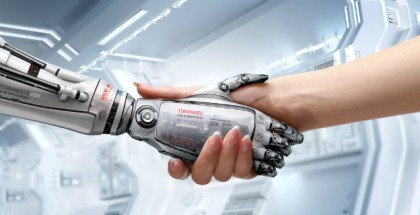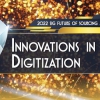In today’s business climate, it is innovation levels coupled with speed to market that will determine a company’s success. This was one of the reasons why, in 2016, we saw more interest in trends around optimising business processes – from automation to the as-a-service ecosystem. Businesses are looking to make the most not just of their employed staff, but also of their technology and the pure raw data that they hold. As a result, through the rest of 2017, we will see key growth in businesses using digital disruption as the core of business transformation in the near future.
Business transformation
In order to help clients achieve this innovation for business success, service providers need to bring expertise in design thinking, business process reengineering and business model redesign to the front of their offering in 2017. By reducing the time between initial idea and proof of concept, businesses will be able to ensure that their final product is the optimum solution, and brought to market in the shortest time possible.
In order to support this improved accuracy, fast processing and speed-to-market, businesses will be deploying software robots as part of a bigger move to automate business processes to keep up with app-based enterprises. This wave, driven by the increasing presence of the IoT and smart machines in the mainstream, will help speed the development process, with specific verticals already deploying intelligent automation technologies.
Changing technologies
Consumer trends frequently become integral parts of business practices, and this is something we expect to see in the rise of augmented reality (AR) to improve customer experience. While AR is already popular for customer engagement, we will see companies layering digital information such as videos, information manuals and relevant information over the customer’s existing physical world. By helping to immerse customers in the available information, companies will be able to increase their customers’ engagement with their product, and also help provide quicker customer complaint resolution with effective and relevant information sharing.
To help businesses deal with the deluge of data, more and more companies are migrating to the cloud – and cloud technology. Cloud service providers will be looking to offer increased efficiency and agility, and will increasingly come to do this through the Business Process as a Service (BPaaS) approach, which helps to draw core cloud services such as Software as a Service, Platform as a Service and Infrastructure as a Service into a single, combined, scalable environment.
However, the increase in cloud utilisation has also lead enterprises across the globe to implement data security measures. This year data security will become a top priority as companies look to protect the information they generate.. With reliable data security key to maintaining a business’s assets as well as customer trust, business service providers will increasingly offer Security as a Service (SECaaS), to help organisation not only maintain and protect their data, but also adhere to regulatory changes such as the General Data Protection Regulation (GDPR).
Humans and robots, side by side
The increasing wave of digital services and transformative technologies will not remove the need for the human touch in the business environment. Instead, the increasing use of automation will help to transfer employees to more involved, meaningful, value-added work, while the machines get on with the mundane tasks. This can boost both efficiency and workplace satisfaction as human operators who are currently stuck performing repetitive tasks become relied on for their judgement and opinions.
The collaboration between humans and machines will be at its most evident in enhancing customer experiences. Increasingly sophisticated bots will become more commonplace not just in the office, but also in the day-to-day lives of customers. People will get increasingly accustomed to virtual interactions, moving from just the well-known avenues of e-commerce, app-based interactions and online banking into a world where interactive voice response will play a key role in customer care. As a result, more companies will invest in voice-based technology to play a pivotal role in their customer experiences. This will be supported by the 2016 developments in natural-language recognition and voice synthesis, alongside machine learning, that help to naturalise the machine interactions to become virtually indistinguishable from humans.
We’ll also see machines and humans working side by side in the rise of chatbots as a big trend in user interfaces. Customers will increasingly be able to interact with chatbots as they would do with humans as the computer learns to mimic human conversations. While some organisations in the airlines industry are already doing this to communicate flight information with customers, we will see these applications expand and increase over the year to come.
The challenge of making your business faster, more agile and more effective is one that every company faces, and over the remainder of 2017 we’ll see the coming-of-age of a human/robot collaboration to make this possible. With better data usage and process automations, companies will be able to make the most of new technologies and thrive in a competitive business landscape through speeding time-to-market and innovation processes every step of the way.









